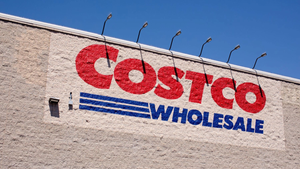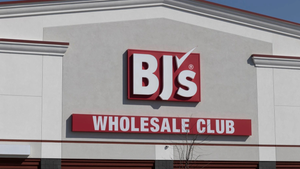DELI: FROM MEAT TO MEALSDELI: FROM MEAT TO MEALS
Fifty years ago when SN was born, supermarkets didn't have delis.They emerged from the meat department in the late '60s and early '70s. Even back then, customers latched onto the convenience of a fresh, ready-to-eat product, whether it was a roast chicken or a half-pound of olive loaf.Somewhere, a meat manager roasted a chicken -- probably to save it in its last days of salability -- and suppliers
July 22, 2002
Roseanne Harper
Fifty years ago when SN was born, supermarkets didn't have delis.
They emerged from the meat department in the late '60s and early '70s. Even back then, customers latched onto the convenience of a fresh, ready-to-eat product, whether it was a roast chicken or a half-pound of olive loaf.
Somewhere, a meat manager roasted a chicken -- probably to save it in its last days of salability -- and suppliers who were dealing with mom-and-pop delis began to sell their fare to supermarkets. Then, it wasn't long until those cooked products were evicted from the meat case and put on their own.
"The thing about deli is that it grew out of what other departments didn't want. Originally, it was part of the meat department, and in the Midwest, luncheon meats were big. Olive loaf and pickle loaf were the 'wow' flavors. Cooked chickens didn't sell that well in meat, so they migrated to the deli [when it became a separate department]. Kroger was one of those that led the way in the '70s and '80s by populating all its stores with delis," said Bob Beckerman, who recently retired from Supervalu, Eden Prairie, Minn., where he was corporate director, wholesale deli-bakery food service. He began his decades-long retail career with Kroger.
Beckerman added that the customer's increasing quest for convenience, the retailer's labor concerns, technological advances, category management, globalization and intense competition in the retail world have combined to shape today's deli. So have the influence of food-service concepts like Boston Market and EatZi's, the public's new awareness of food safety, and the debut of improved products such as all-natural deli meats, others told SN.
Like most fledglings nudged from the nest, delis matured, got innovative and learned from their mistakes. When it comes to roasted chickens, made-to-order sandwiches and other ready-to-eat items, the department appears to have come full circle -- but with improvements.
It doesn't fit one mold. Successful operations range from those offering only sliced meats and cheeses and a few salads to sit-down restaurants such as those in Draeger's on the West Coast and multi-station food courts with seating for more than 100, like Wegmans, SN's sources said.
"Deli is now the calling card in many stores, the destination, the differentiator," said Ed Meyer, vice president, deli-seafood-prepared foods, Schnuck Markets, St. Louis.
Its growth has been fueled by customers' perceptions of what the deli is and what it can do for them, Meyer said.
"We [in the deli business] were ahead of the curve in many respects, aware of customers' time constraints. We had a loaf of bread behind the counter. Customers found it quicker and easier to buy a sandwich than a loaf of bread and a pound of ham. Then we got into hot foods. Boston Market was our best friend. We took from them. "
The business is pretty much splintered between meats and cheeses, hot foods, ready-to-heat foods, and sandwiches, but in the hot-foods category, the pendulum has swung back to finger foods, because they're so easy to eat, Meyer and other retailers told SN.
"Fried foods have had a comeback. We can't make enough fried veggies, and we do a big job with breaded chicken livers," said Ed Boxman, vice president, deli-bakery, at 58-unit Shoppers/Metro Food Stores, Lanham, Md.
Boxman, a 40-year veteran of the retail food industry, has been with Shoppers/Metro for eight years. During this time, he launched a rotisserie chicken program that features theater and secondary displays and he groomed the chain's self-service, hot-food program.
"In the last 10 years, sliced meats and cheeses at the service deli counter have taken a back seat to hot foods. We've grown them from 12 wells to 20. In this marketplace, hot foods are very popular."
Meanwhile, the average service deli in Shoppers stores has shrunk by 8 to 10 feet, while self-service sections have expanded, in some cases doubling in length. Convenience is king, all SN's sources said.
"It's the changes in society that made the deli necessary in the first place. Women used to spend all day cooking. That's not possible anymore with everybody in the family working outside the home," said Morton Sloan, president of Morton Williams Associated Stores, Bronx, N.Y., which has eight units in Manhattan.
Morton Williams Associated began with just "appetizing" departments which featured smoked fish and the like to cater to Manhattan's large Jewish population, Sloan said. It was only 15 years ago that the chain put in its first full-fledged deli separate from its meat department. Then the department grew into chef-managed kitchens in most of its stores where hot and cold self-service food bars are a hit with customers.
"Hot food for us is a good business and we expect it to continue," said Richard Travaglione, Morton Williams' vice president of deli and meat operations.
All the talk about hot foods seems to run counter to the home-meal replacement craze that had its day in the sun five or six years ago. At that time, retailers were looking into chilled prepared foods in the service case and in the self-service case to meet the dinner needs of their time-starved customer base, and some are doing well with those. Those that succeeded with that effort had what consultant Jim Riesenburger calls "ROV", or return on vision.
Riesenburger, who engineered much of the prepared-foods programs and food courts as director of deli operations at Wegmans Food Markets, Rochester, N.Y., said that with all the technical changes and the learning that has taken place as delis evolved, the one thing that's still missing in most is vision.
"Upper management has got to go that extra yard and make a commitment to the future. Too many want instant gratification. A few of the industry leaders like Wegmans and Ukrop's and H-E-B really understand what's involved and have moved beyond the status quo. Others who have [the vision to implement successful meals programs] include Fairway, Victory Markets, Bristol Farms and Whole Foods," Riesenburger said, noting that there are not a lot of them.
The trend-setting Wegmans installed its first extensive seating area, with a total of 200 seats, in a huge food court at a store in Canandaigua, N.Y., in 1992. And there, the curtain went up on "theater," a newly developing concept in the supermarket. In open production areas, associates chopped vegetables and pepperoni for pizzas, stir-fried made-to-order Chinese food, and turned out Caesar salad at an in-aisle station during lunchtime. A mobile, made-to-order sandwich station was set up during the noon hour and between 5 and 7 in the evening.
"We want food shopping to be fun," said a Wegmans source at the time.
Many other supermarket chains echoed that sentiment, but weren't necessarily able to sustain the effort. Wegmans has continued to be successful, and so has Ukrop's Super Markets, Richmond, Va., because they had built in flexibility, sources said. Vision was a crucial factor.
"People told us we were crazy when we built a central kitchen 10 years ago. They said they were glad they weren't doing such a thing. Now, many of them tell us they wish they had," Bobby Ukrop, Ukrop's president and chief executive officer, told SN on the 10th anniversary of the chain's central kitchen, the core of its prepared-foods program.
"When I look back at Ukrop's and their place in the spectrum of the deli industry, I would have to say that the incorporation of the central kitchen in support of successful store-level, retail food-service concepts is what sets them apart from anyone else. Ukrop's achieved centralization without losing store-level, merchandising magic. As a result, they achieved high volume and profitability," said Brian Salus, president, Salus & Associates, a Midlothian, Va., consulting firm.
Salus helped launch the successful Ukrop's program before he left the company to start his own consulting firm.
Unlike Ukrop's though, many retailers went headlong into their version of "home-meal replacement" without much planning and hen had to retrench. They hired executive chefs and began turning out entrees fit for an upscale restaurant, but they found most customers didn't want to take duck flambe home to feed their kids.
It took a while for retailers to go back to basics, but most have. Indeed, many are building hot-deli programs around rotisserie chicken, the very thing that propelled them into business some 30 years ago, but they're doing it with more care. Side dishes are merchandised in reach-in coolers nearby. Some even offer a freshness guarantee.
The phenomenon of hot foods' new growth in supermarkets is bred in large part by huge leaps in technology, said R.H. "Sonny" Dickinson, a veteran of the food industry who started his own company, The Dickinson Corp., a Columbia, S.C.-based, food-service engineering firm.
"Better self-service cases and scales, the use of radiant heat, programmable ovens and combi ovens have set the stage, and video training has created a more informed employee. There's also a different consumer today who's putting pressure on the retailer to give him a complete meal. As a result, delis are taking more of a role as profit centers," Dickinson said.
Combi ovens, because they have multiple functions, give the retailer flexibility and occupy relatively little real estate, he pointed out. And the introduction of oven-hold-chiller systems has eased costs because meat, for example, can be cooked on the night shift and held at optimum temperatures that don't compromise the integrity of the product.
Dickinson, who was with equipment manufacturer Alto-Shaam for 15 years, said food safety, too, is better ensured with advanced technology. Retailers readily agree.
"The growing consciousness about food safety has changed the way we do business, and it will continue to influence the way we merchandise products in the deli. The new generation of display cases, for example, are designed for food safety as well as for aesthetics. The equipment sales people, when they're showing them to you, point to [those features] first," Schnuck's Meyer said.
About the Author
You May Also Like




